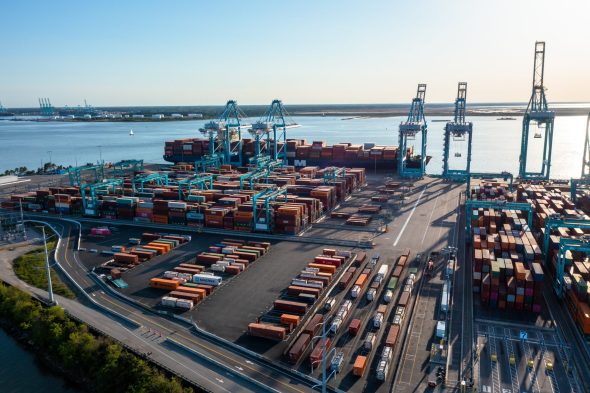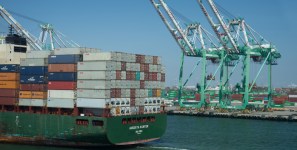Impressive Growth at the Port of Virginia
Total annual cargo transported by ultra-large shipping vessels has more than doubled since 2020. Shippers are increasingly opting for vessels capable of 20,000 plus TEUs (twenty-foot equivalent units), and the Port of Virginia appears poised to capitalize on this trend.
Read also: Port of Virginia Cargo Volumes Continue to Soar
Massive ocean containerships naturally require more space to maneuver in and out of ports. For most ports, these ships reduce traffic to a one-way system where one ultra-large vessel, in the case of the Port of Virginia, must leave the channel before the next ship can enter. Financially, the port does not make money on transit in and out, but rather, turning ships on the berth. A $450 million dredging project that began in 2019 will transform the port into the deepest and widest on the East Coast, allowing for ultra-large vessels to move through the channel, in and out, simultaneously.
The Port of Virginia has witnessed laudable growth over the first quarter 2024. Container volumes are 7% above 2020, and strong growth is coming from India as well as South and Southwest Asia overall. The port counts on Lowe’s, Walmart and similar retailers as its main clients, and while the India to East Coast trade has been hampered by the Red Sea Houthi attacks, volume remains positive despite the rise in fuel prices.
The channel deepening project is part of a larger $1.4 billion outlay to modernize and grow the port’s capacity. The total number of berths is planned to expand to five, and the wider shipping channel is already reducing stay times by nearly 15%. Efficiency metrics are up, and carbon emissions are down as ships idly waiting for the channel to clear are entering and exiting quickly.
The closure of the Port of Baltimore rerouted vessels to Virginia. The port’s terminals feature one shared system that truckers use to plan their moves, as opposed to decentralized and less efficient terminal-specific systems. The state has invested $5 billion-plus in improving bridges, highways, and tunnels to receive additional freight, while the port began an expansion project on its central rail yard that should help absorb increased traffic.
In January of this year, the Port of Virginia was the first on the East Coast to power its terminals with 100% clean energy. This is an impressive eight years ahead of its 2032 target, and the port is now only buying nuclear, wind, or solar energy.





Leave a Reply